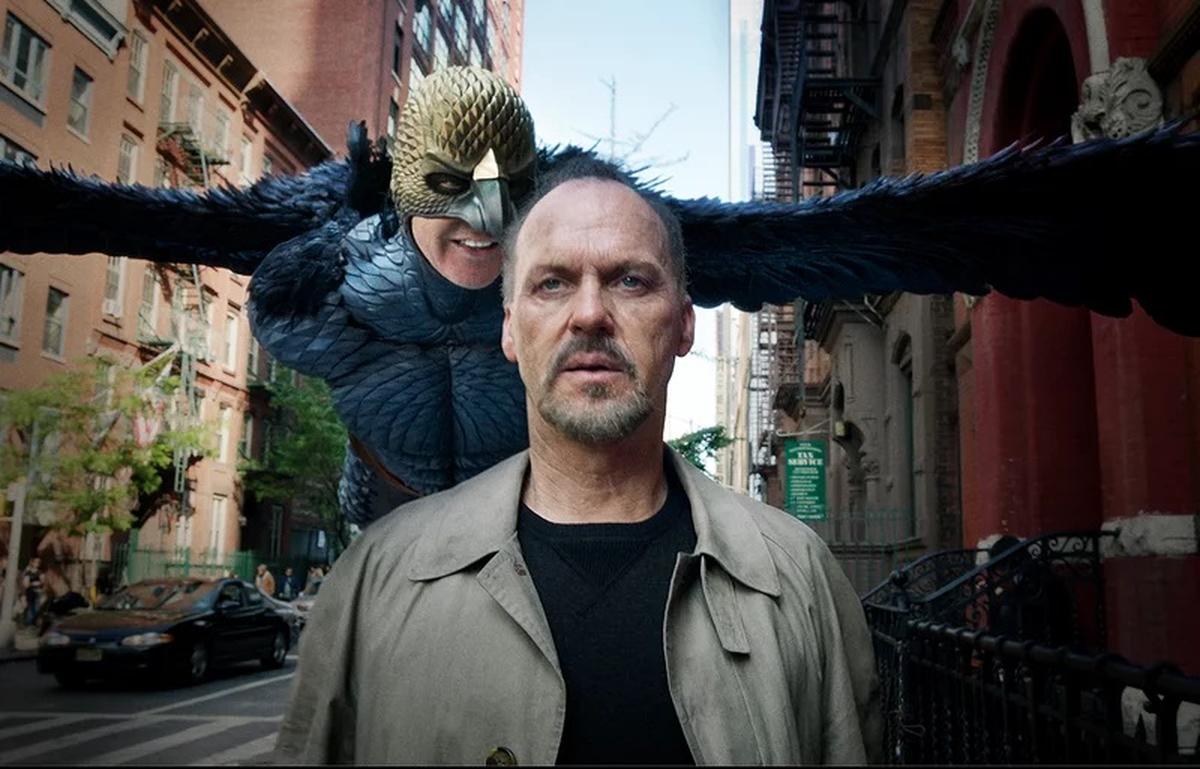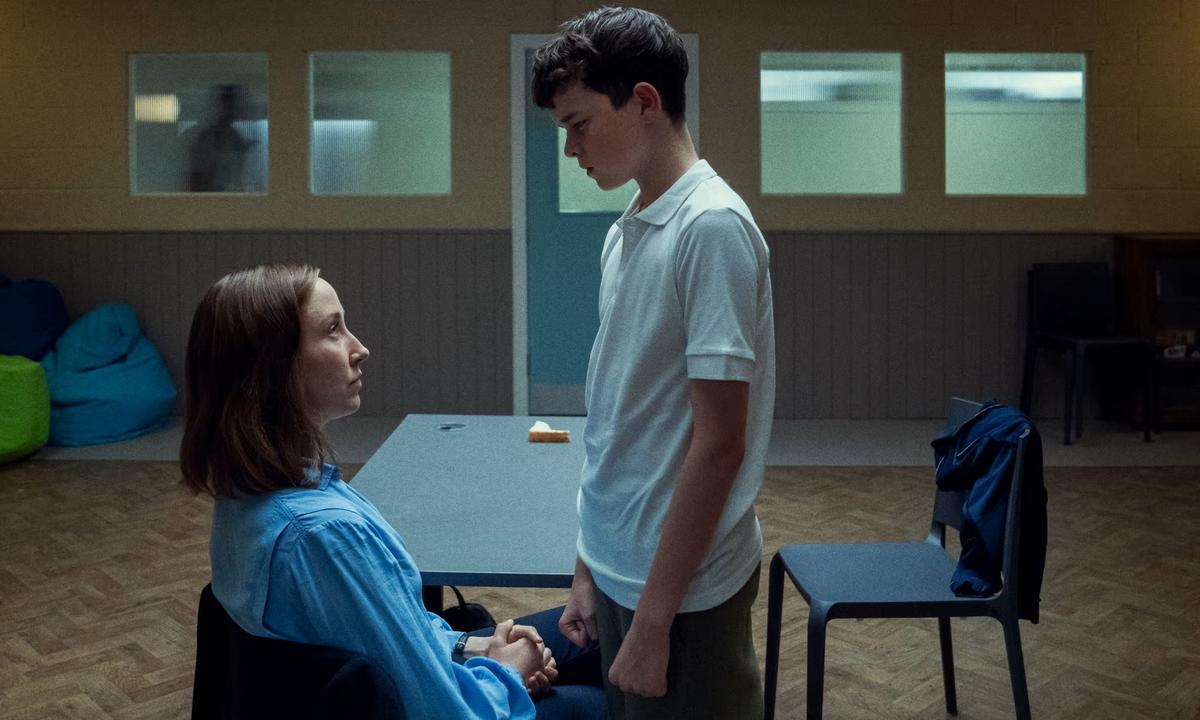In a promotional behind-the-scenes interview conducted on the sets of the Apple TV+ comedy series The Studio (co-developed by and starring Seth Rogen), actress Kathryn Hahn says, “Seth (Rogen) and Evan (Goldberg) had this really ambitious plan to shoot most of the show as ‘oners’, y’know, one-shots, long uninterrupted takes with no cuts. As an actor, it makes everything more challenging but also more beautiful because with every scene you feel like you’re in a play.”
Rogen plays the lead character Matt Remick, a perpetually hassled studio head. He is genuinely in love with the movies but tries to balance that impulse with the bottom line-driven demands of his corporate paymasters. The show has been universally acclaimed not only for its satire but also, as Hahn points out, the ambitious usage of ‘oners’.
Essentially, Rogen and Co. have expanded the scope of the Aaron Sorkin-esque ‘walk-and-talk’ sequences popularised by 2000s TV mainstays such as The West Wing, Scrubs and Boston Legal (all ‘workplace stories’ like The Studio). The walk-and-talk typically takes place in a narrow corridor (at the hospital, law firm, etc.) and focuses on the lead characters. As they walk towards the camera, other characters flit in and out of the frame.
The Studio executes the same idea, only the camera isn’t right in the leads’ faces, like it would be in a classic ‘walk-and-talk’ 20 years ago. The camera is equally interested in showing us the world around Matt and whoever he is talking to in a scene, weaving and bobbing in and out of the characters’ immediate vicinity. After all, a movie set is a more colourful workplace than a hospital or a law firm or, well, the White House.
The Studio’s oners utilise this rather well, all the way through the show’s 10 episodes. The second episode, in fact, is called ‘The Oner’, and follows Matt as he attempts to help Sarah Polley (playing herself) shoot a oner for her (fictional) film in the show.
In the here and now
The oner has, historically speaking, been a point of prestige for filmmakers and actors, a show of strength that underlines the technical skills of everybody involved. Alfred Hitchcock’s Rope (1948) is considered one of the first major films to deploy the oner. In those days, a single reel of film was only capable of carrying around 20 minutes of footage.
Four reels, four oners — Hitchcock used lighting and editing tricks to make it look like the film consisted of four long takes. The story follows two friends who kill a mutual acquaintance and then host a dinner party with the corpse hidden in the house. The oners elevate the sense of tension the audience feels, watching two murderers trying to get away with it, while the corpse rests right under their noses.

A still from Alejandro Gonzalez Inarritu’s 2014 film ‘Birdman’.
Orson Welles’ A Touch of Evil (1958) famously begins with a oner, where we see an unidentified man placing a bomb inside a car. Martin Scorsese takes the audience on a oner-trip through the Copacabana nightclub in his mob classic Goodfellas (1990) (Scorsese, incidentally, plays a tragicomic version of himself in the first episode of The Studio). Robert Altman, John Woo, Alfonso Cuaron et al — in every era, major filmmakers have used the oner to emphasise the ‘here and now’ nature of specific scenes, or just as a showcase for technical virtuosity.
The last decade of oners, however, has been inspired by Alejandro Gonzalez Inarritu’s Birdman (2014) — the film has been shot and edited in such a way that all of it looks like one big oner, a 110-minute shot if you will.
Leading up to ‘Adolescence’
Other than The Studio, there have been two TV shows this decade that have used the oner in inventive, formally ambitious ways. The first is the Marvel TV show Daredevil (2015), where the first season features several hand-to-hand combat scenes shot as oners. The pick of the lot is a hallway fight scene where Daredevil/ Matt Murdoch rescues a kidnapped child after fighting his way through a corridor jampacked with goons — the lighting is inspired from a famous scene in Park Chan-wook’s Oldboy (2003), where the protagonist beats up a corridor full of goons with a hammer.
The second TV innovator in this context is the recent, excellent British miniseries Adolescence, about a 13-year-old boy arrested following the murder of a girl from his school. Each of the four episodes of Adolescence is shot like a oner — no editing tricks this time, just a single uninterrupted take.

A still from British miniseries ‘Adolescence’.
There’s a 12 Angry Men-like unreliable narrator edge to the drama in Adolescence, and at their best, the long takes amplify the audience’s unease. I love the first and second episodes’ usage of the one-shot but also feel that by the time the fourth episode winds down, the novelty value of the device wanes.
Oners are great when done expertly, but because of the technical task at hand, creators run the risk of focusing too much on shot-mechanics and too little on the narrative. Thankfully, The Studio understands this only too well and takes care not to use its signature device indiscriminately, or without a clear purpose.
The writer and journalist is working on his first book of non-fiction.
Published - May 30, 2025 10:30 am IST








